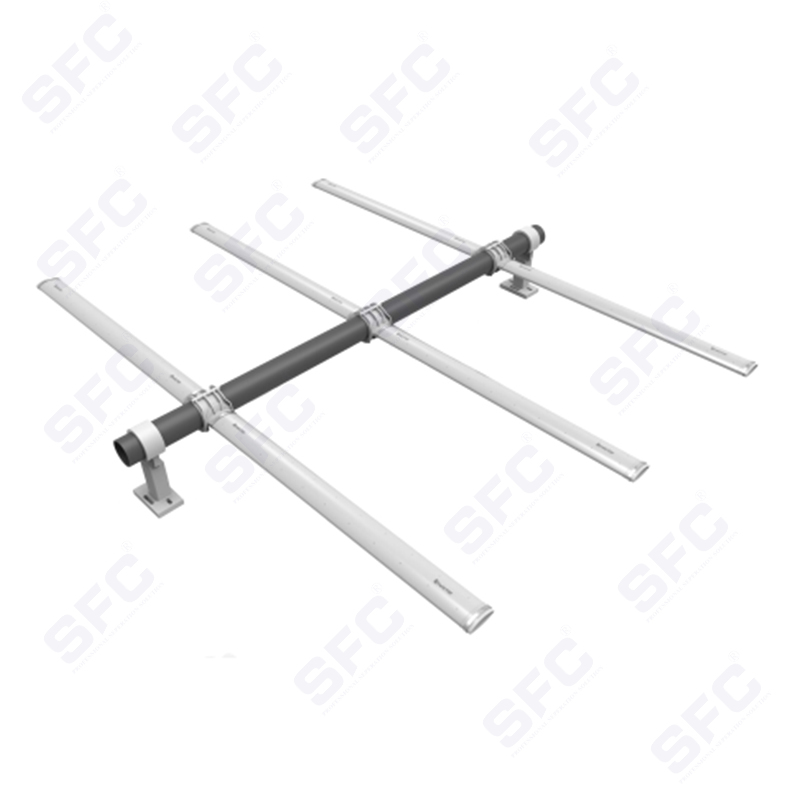Water Treatment Fine Bubble Diffuser: Enhancing Efficiency in Aeration Systems
In the realm of wastewater treatment and water purification, aeration is a critical process that ensures the biological degradation of organic pollutants. Among the various aeration technologies available, the fine bubble diffuser has gained widespread recognition for its superior oxygen transfer efficiency and energy-saving capabilities.
A fine bubble diffuser is a device used in aeration systems to introduce air into water or wastewater in the form of tiny bubbles. These bubbles increase the surface area for oxygen transfer, enhancing the dissolution of oxygen into the liquid. Fine bubble diffusers are typically installed at the bottom of aeration tanks, where they release air through porous membranes or perforated materials.
The small size of the bubbles ensures that they remain suspended in the water for a longer period, maximizing oxygen transfer efficiency (OTE). This makes fine bubble diffusers an ideal choice for biological treatment processes such as activated sludge systems.
The operation of a fine bubble diffuser involves the following steps:
Air Supply: Compressed air is supplied to the diffuser system through blowers or compressors.
Bubble Formation: The air passes through the diffuser's porous membrane or perforated surface, creating fine bubbles with diameters typically ranging from 1 to 3 millimeters.

Oxygen Transfer: As the bubbles rise through the water column, oxygen dissolves into the liquid, supporting aerobic microbial activity.
Biological Degradation: The dissolved oxygen is utilized by microorganisms to break down organic matter, reducing biochemical oxygen demand (BOD) and chemical oxygen demand (COD).
The entire process is designed to optimize oxygen transfer while minimizing energy consumption.
Advantages of Fine Bubble Diffusers
1. High Oxygen Transfer Efficiency
Fine bubble diffusers are known for their exceptional oxygen transfer efficiency, often exceeding 6-8% per meter of submergence. This is significantly higher than coarse bubble diffusers, making them more effective in oxygenating water.
2. Energy Savings
Due to their high efficiency, fine bubble diffusers require less air volume and lower energy input compared to other aeration systems. This translates to reduced operational costs, making them a cost-effective solution for wastewater treatment plants.
3. Improved Mixing
While primarily designed for oxygen transfer, fine bubble diffusers also contribute to gentle mixing within the tank, ensuring uniform distribution of dissolved oxygen and microorganisms.
4. Low Maintenance
Modern fine bubble diffusers are constructed from durable materials such as EPDM rubber, silicone, or polyurethane, which resist fouling and clogging. Their modular design allows for easy replacement and maintenance.
5. Environmentally Friendly
By optimizing oxygen transfer and reducing energy consumption, fine bubble diffusers help lower the carbon footprint of water treatment facilities, aligning with global sustainability goals.
Applications of Fine Bubble Diffusers
Municipal Wastewater Treatment Plants: Fine bubble diffusers are extensively used in activated sludge systems to treat domestic sewage and industrial effluents.
Industrial Wastewater Treatment: Industries such as food processing, pharmaceuticals, textiles, and breweries rely on fine bubble diffusers to manage high-strength organic waste.
Aquaculture Systems: In fish farming and aquaculture, these diffusers provide oxygenation to maintain healthy aquatic environments.
Lakes and Reservoirs: Fine bubble diffusers are used in lake aeration systems to combat eutrophication and improve water quality.
Biological Nutrient Removal (BNR): They play a crucial role in nitrification and denitrification processes, helping remove nitrogen and phosphorus from wastewater.
Key Features to Consider
When selecting fine bubble diffusers for a water treatment system, consider the following factors:
Material Quality: Choose diffusers made from high-quality materials that resist wear, fouling, and chemical degradation.
Bubble Size: Smaller bubbles enhance oxygen transfer efficiency, so opt for diffusers that produce consistent fine bubbles.
Installation Flexibility: Modular designs allow for easy installation and retrofitting into existing systems.
Durability: Look for products with long service life and minimal maintenance requirements.
Compatibility with Blowers: Ensure the diffusers are compatible with your air supply system to achieve optimal performance.
The fine bubble diffuser represents a significant advancement in aeration technology, offering unparalleled efficiency and cost-effectiveness in water treatment systems. Its ability to maximize oxygen transfer while minimizing energy consumption makes it an indispensable tool for modern wastewater management. Whether you operate a municipal treatment plant, an industrial facility, or an aquaculture farm, investing in fine bubble diffusers can enhance the performance of your aeration system while contributing to environmental sustainability.
As water scarcity and pollution continue to pose global challenges, innovative solutions like fine bubble diffusers will play a pivotal role in ensuring clean and safe water for future generations.



 English
English Español
Español













